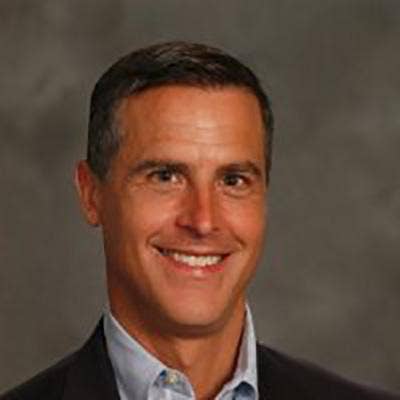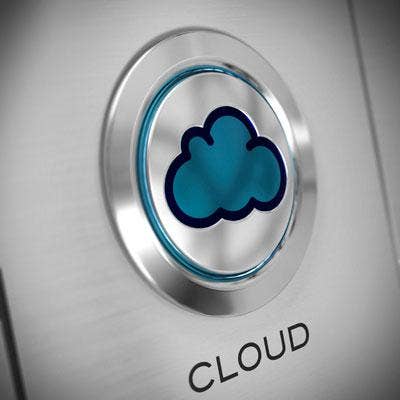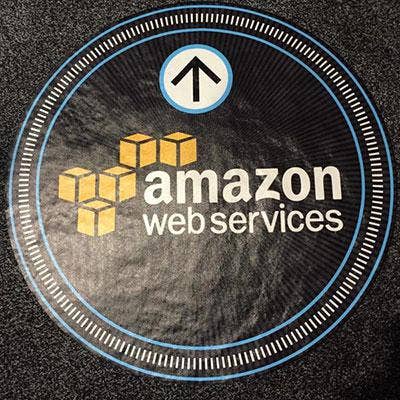Veeam President On The Cloud Opportunity, The AWS Threat And The Danger For Partners That Don't Move Fast Enough

'Some VARS Are Very Proactive In The Cloud. A Lot Of Them Are Not'
In his seven months as President and COO of Veeam, Peter McKay has recognized something about the disaster recovery and backup software firm's partner base: It's not embracing the cloud quickly enough.
Now, Veeam is making it clear that it is moving aggressively into the cloud, offering its disaster recovery and backup software as a service, and it wants its partners to come along. If they don't, McKay says, they risk being left behind. A new $200 million investment program helps Veeam "scour through our partners asking which ones want to help us in the cloud," and help them work with cloud providers to offer customers cash incentives to adopt a cloud strategy. "Some VARs are very proactive in the cloud. A lot of them are not," McKay said. "They feel like, 'I built a business on the perpetual license model and I'm going to delay that as long as I can.'"
What follows is an edited excerpt of McKay's conversation with CRN.

How fast are customers moving to the cloud?
It is moving far faster than anybody expected. In SMB it's huge. They want to get out of the infrastructure space. There's incredible growth in the SMB space. In the enterprise as well. CEOs are telling CIOs, 'Move everything to the cloud.' Now, CIOs are saying, 'Whoa, that can't happen, we have to do this the right way.' So they're slowing it down and trying to figure out the best way to do it. They're trying to figure out what workloads they can move to the cloud safely. It may not be AWS, it may not be Azure. It may be some of these others that are very focused, on health care, for example, or education. The two main drivers are SMB and enterprise. Commercial is a little bit of a laggard. They don't have a dedicated team, they're a little bit of the last to move. Europe is moving really quick. Australia has always been very connected. The North American market is ahead by a year or so, but it's moving fast around the globe.

It seems like customers are using a hybrid model because when backup is factored in, AWS isn't as inexpensive as they thought.
People see the cost ... It's a lot more expensive than they thought and it busts a lot of the budgets that they had. And the channel doesn't really make anything. If you leverage Veeam on Amazon, you're not making much. It's kind of a race to the bottom, and it's kind of direct model. What we believe is the best scenario for us is that partners pick this up, we enable them with partners like SingleHop an iLand that have built this business, and we join them together.

How is Veeam adjusting to offering its software as-a-service?
One of the most interesting parts of this is the managed services providers, the cloud providers. There are now 14,300 cloud providers, people who are offering DR as a service, back-up as a service with Veeam today is our customer base. That's where Cloud Connect comes in, connecting resellers, our channel partners, with the 14,300 cloud providers. That's where we've changed the comp plan to incentivize our salespeople to drive business. You can drive it through a partner, and if they want to go to a cloud provider, it's indifferent to a salesperson. Before, it was, 'I want to do a perpetual license,' but the customer might want to go to a subscription through one of our partners. We've neutralized that for our sales force and our partners to try to drive: If you want to go perpetual on-prem, you can do it, if you want to go to the cloud, you can do it. We're indifferent what way you go, and that's a difference from last year.

What caused that? Are you seeing a rise of cloud service providers taking more deals, and VARs aren't moving fast enough?
Some VARs are very proactive in the cloud. A lot of them are not. They feel like, 'I built a business on the perpetual license model and I'm going to delay that as long as I can.' What we're trying to do is say, look, you're the partner of record for State Street, for example, and we want you to be able to sell both Veeam perpetual and Veeam as a service through any one of our 14,000 cloud providers. We want you to sell that, and we're pushing you to do that. At some point, if they don't, someone else is going to, so we're trying to make that happen. We're trying to get our partners to also be neutral, to make money on either scenario, but leverage the ecosystem we've built. This is the big transition that's going on.

Against which competitors are you seeing the biggest wins? Commvault?
Veritas. It's like a dead carcass in the middle of the road.
Commvault just inked a deal with AWS.
Well, everybody inks a deal with AWS. VMware inked a deal with AWS. A lot of it is they just need a story. Everybody needs a story, but they don't like it. They do it because they have to because they have 2 million customers on it. It's like table stakes. You have to have something, but nobody likes it. Azure, at least you feel better about it. I think that's the nature of it. You know you're going to have to play with them because customers are moving there, but it doesn't mean you like it. For a company like us, with a 100 percent partner model, that's a big chunk of the customers that are not going through our partners. They're going directly to AWS.

How big of a competitor is AWS to the channel and your partners?
To anybody that makes their business on-premise solutions, they're taking workloads. Look at VMware, their vSphere market is declining, not because they're not leveraging it, because workloads are moving to the cloud and the market is getting smaller. Our channel partners, any traditional, perpetual license company, their markets are getting smaller. Everything is moving to SaaS, or AWS. That's where the partners really have to start getting aggressive and really start taking advantage of it, like we are. Take what could be a massive threat to your business and make it into a massive opportunity. We're trying to bring all the partners we've worked with in the past with us, but we have to move in that direction because customers are asking for cloud solutions.

How is Veeam building its presence in the enterprise space?
In North America, we've added about 70 new enterprise sales executives with different enablement capabilities, since I've joined. We didn't have a segmented enterprise focus. It was commercial for just about everything. It was segmented more based on deal size, like if it's under $10,000, it's inside, if it's anything between $10,000 and $100,000 it's another team and if it's over $100,000 it was someone else, which made it really difficult for our partners to work with us. We re-segmented our business, so in North America, for example, we have an SMB team, and that's all inside sales through partners. Everything is through partners. We don't do anything directly. In the enterprise, we needed a little more help to sell. It's getting more complex. The commercial group, which is the team we had outside, we've added more to that.

Those guys do the heavy lifting? Do they mine the accounts?
We look at it as 50-50. Some of it comes from the partners driving it and we help. Sometimes, we get it and the partners help. In each territory, not only do we have these customers in these territories, but they also own the partners in those territories to help get them to work together. Partners are getting paid no matter what, so you might as well invest in them and work better together with the partner community. Everything goes through the channel. There's no conflict.

Do they get accelerators if they hit above 100 percent of goal?
It's 105, 110, 115 and up. We have a club trip, and you target 300 people to go to a club trip. 525 people exceeded quota so now we have to go to another location. We had Maui, but we could only have 300 people in Maui, so now we have two clubs. It was a great year.
What kind of growth has Veeam seen recently?
We had a really good year. We hit $607 million, 28 percent year-over-year growth. We now have 45,000 partners around the globe, 11,000 in North America.

There are a lot of partners like Cirrity and Green Cloud that use the 100 percent channel model. People are comfortable with them, but there are a lot of cloud providers that are competitive with partners too. How does that play out in the market?
This is the dilemma. You can only push the channel so much to get there. One of the things we're going to announce is sort of an extension of our cloud strategy. What we've done is we hired Paul Mattes, who came from the Microsoft Azure team. He came on six months ago. Paul's job is the strategy. How do we co-exist in a world we've got a list of 45,000 and growing traditional partners and all these cloud providers that we want to enable so they're using our software and generating business. There's probably 25,000 of these cloud providers that we want to lock up, and we want them using our technology. What we're trying to do is bring them together. We've got 231,000 customers today. We want to take those customers and the partners that sold it to them and offer additional cloud services through these guys, through those partners.

And the point is to offer them enough comp to go and sell it? What's the model?
They have their reseller margins depending on the tier of the partner. We've just leveraged the existing agreement that the partner had and added that if it's a subscription, it's pretty much the same margin that you would get if you're doing it perpetual. Most partners like to retain account control so they get the recurring revenue. As long as the customer is happy, you keep getting recurring revenue. Your job is to keep the customer happy and sell up.

Can the partners white label it? Can the partner be the point of contact for the customer?
That's what Cloud Connect is about. It's trying to keep the partners the point person on those accounts. We want the partner of record to be the one selling the cloud solution. The customers are going. They're going to the cloud. We don't want our partners to be left out. We built our business on these 45,000. We want to go with them to the cloud, but they need to move, and they need to move quick. We're trying to make sure they stay the partner of record on all of our customers going forward.

A lot of partners have trouble making the jump to a subscription model. They're so used to capex, and they get scared of committing dollars before they see the revenue.
That's the evolution. They struggle, and it's all about comp. Instead of everything up front, it's over a year, two years, three years. What we've done is take what would be a traditional perpetual license dealbackupand we said what do we think that's going to be on a subscription, and we've neutralized it, meaning a sales rep, a Veeam sales rep will make the same amount if they sell a perpetual or a subscription. We're paying them up front for that.

When was that comp change made?
January 1. That was the problem most companies had. I've got to switch over, and I've got to neutralize it. At VMware it's a disincentive, it's a tax. The last thing you want to do is sell subscription. What we're trying to do is say it's happening, and we want you to do the right thing for the customer. Let them drive it. If they want to go perpetual, they can. If they want to go subscription, they can. What most people want is both. They want to have a mix, and we have to make sure it's neutral. We're doing the same for our partners, because everything goes through our partners. That's probably the biggest shift on our comp side to drive cloud adoption.

It seems like you're upping the ante on your cloud strategy.
We are. One is the team. We got Paul Mattes, Danny Allen and a number of people. We're reached the 14,300 mark in terms of these partners. We've invested a lot of money in terms of our cloud team globally. Those are the people who are going out to recruit the cloud providers by segment. It's a massive cloud market, and companies like AT&T and Verizon have massive clouds and are going to customers selling cloud solutions. We want DR-as-a-service and back-up-as-a-service to be on every one of them. We see that as a massive opportunity for us in 2017, 2018.

What other investments are you making?
We're making a $200 million investment in incentivizing the services to the community. These 14,000 partners, they put in $1,000 and we put in $1,000 as a discount, basically saying you get a $1,000 credit. If all you're going to do is $1,000, then you get it for free. We're pushing the partners to say, 'I'm giving you a credit of $1,000 to go and recruit your customers to the cloud.' It gets the customer to come to the partner and say, 'Hey, I want to do this.'

So, you've 'neutralized' this for your sales team, but have you done anything to the comp for partners that says we're giving you an extra rebate?
What we've tried to do is leverage what they already have. If they get a 35 percent discount, they get a 35 percent discount. What is different going forward, I'll let you know.
Does Datto have an advantage here? All their customers are managed service providers.
They are the cloud. They own all the data centers. All these 14,000 compete with Datto, and Datto I think does some channel, but they don't have a channel focus, it's been more direct.

Are your new hires all focused on the enterprise?
They have 40 accounts. That's all they have, and that 40 is going to go down to 30, down to 20 and down to 10. What we're finding is the buyer is changing, especially in the enterprise. We need to go broader and deeper into the enterprise. In commercial, you maybe have 200-300 accounts per rep. We wanted to go to a very high-touch selling effort with our partners or our Alliance partners, so HPE is now involved there. It's pretty much the Fortune 1,000 and their subsidiaries. That's been the focus for that team. If you look at where Veeam is to start the year, we're probably 52 percent ahead of where were last year at this time. The enterprise investment we're making is $30 million in new investment in people, marketing, support, channel expansion, enablement. In the enterprise, the services component is much bigger. In SMB, there wasn't a huge services component.

What kind of impact will that $30 million investment will have for your partners?
It's a phenomenal opportunity for partners that have a strong foothold in the enterprise today. A lot of the people that we compete with, Veritas, Commvault and others, are moving away from the channel. This is a great opportunity for our channel partners to take Veeam – it used to be easy to differentiate you'd say I'll use Veritas and Commvault here and Veeam for everything else – Now, Veeam can be the solution for all markets. That's what we want. We want one solution, one availability platform for SMB, commercial and enterprise with better margins. The money [partners] make with Veeam is better than anybody else in the industry. We're asking the right partners, the partners who really have a foothold in the enterprise, now is really the time to hook your wagon to us. Those people we're adding are looking for the partners that they can invest in to help drive it. Everything goes through the partners, but if they're not there in a territory, we have to go find them, invest in them and grow it.

What will the $200 million investment mean to partners?
It is a way to prime the pump, to get it going. It's a great way to say hey, just try it. It's taking what Veeam has always done, seeding it, free solutions, and if it works, then expand. We get in the door in any of these accounts, and we have an 87 percent success rate. They buy. We're trying to use this $1,000 credit to get them to try it, to get the partners to go to the partners and have a cloud conversation. It's an easy conversation to have. I'm giving you $1,000 to get started. If you like it, you'll grow it from there. When we can get in the door, we can show them what we can do and expand it from there. This makes it easier for that conversation to happen, and we can grow that cloud footprint in addition to the on-prem, which we've done, because most people want bi-modal, and you want to be the focal point. You want to be the trusted advisor on where that goes and how it's done. It's a great opportunity when our competitors are moving away from the channel, they're not focusing on the cloud providers. We see it as an opportunity to bring cloud providers to the channel and bring them to the customer base. That's our bet, and we're putting $200 million to drive that conversation.

What's in it for the partners?
What we're trying to do is make it easier for you to transform your business. I think there's a great opportunity to enhance the rebate to drive them to do that. We're trying to make it an easier conversation. A lot of people have a hard time talking about the cloud. We're trying to make it easier to have a conversation with your customers about the cloud. This is an opportunity to try it. We realize that not all of our 45,000 partners are ready to have that conversation. We're trying to make it easier for them to have that conversation, for our partners to start having that conversation. We want to be the tip of the arrow to start having that conversation, to be proactive rather than reacting to everyone moving to AWS. With AWS, you're not getting anything. The opportunity you have is to bring that opportunity to them before they start moving to Azure and everybody else and then you're not going to get any money.

Last summer you introduced the Availability Platform for Hybrid Cloud. How much traction have you seen since knitting all that together?
It's amazing how quickly it's gone. I think 85 percent of customers have picked up the new release. I think it's the way we've focused on making the technology so it just works. And as you move up, more of those features are things they all wanted for years. The biggest part of what's happening in the market today, with all these guys declining, the Commvaults are declining, HP is declining, Veritas is declining. IDC, Gartner say 50 percent of backup is being swapped out by 2018. They're re-looking at all the legacy backup solutions, and they're swapping it out. It's too complex. It's too expensive. It's not flexible enough to move to new workloads. For us, it's grab market share. We're all about the top line. We're investing in marketing, lead gen, enablement of the channel. We're going and grabbing market, and that's where a lot of our focus is. If you go into a Veritas account, what do you do? If you go into a Commvault account, what do you do?